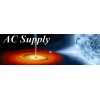Physics is one of the more difficult topics for kids to grasp, but once they get a handle on it, they’ll understand the excitement. Sometimes, the best way to teach students is by introducing them to the exciting parts first. Read on to learn how model rockets can help students learn physics.
Newton’s Law
When it comes to physics, teachers need to start off with the godfather of the subject. It all starts and ends with Newton’s law of motion. “Objects at rest will stay at rest. Objects in motion will stay in motion in a straight line unless acted upon by an unbalanced force.” That sounds simple enough, but it can get complicated.
Start by teaching your students the first law of unbalanced force. Hold a small ball in your hand to show your students how force is acting upon it. The force of gravity is pulling the ball downward. Your hand is pushing against the ball to hold it up. The forces acting on the ball are balanced.
This is the same logic you’ll apply when building and preparing to launch your model rockets. One body will exert force on the other with equal magnitude and cause motion. That force will propel the rocket upward.
Aerodynamics
The aerodynamics of the launch and flight sequence boils down to the four forces: lift, thrust, drag, and gravity. The rocket launches with thrust provided by the engine and overcomes the force of gravity. During this lesson, students will learn thrust needs to be greater than the weight to have a successful lift-off.
Drag and gravity limit the height a model rocket can reach. Studying the flight sequence allows students to determine at which point drag and gravity cause the rocket to slow down and make its way back down. The change in speed is called the coasting phase.
After the coasting phase, the recovery system deploys, transitioning the model rocket into the recovery phase. During this final phase, the drag or lift forces from the recovery devices work against the force of gravity and allow the rocket to descend without any damage.
Rocket Components
Model rocket kits all come with the same components.
- A hollow tube with tail fins and two launch lugs
- A removable nose cone with an elastic shock cord
- An engine consisting of a propellant that boosts the rocket into the sky when ignited
- An igniter
- Fireproof recovery wadding
- A recovery system
Every component is essential to a successful launch. Here at AC Supply, we have classroom rocket kits that consist of these components. When it comes time for your class’s physics lesson, you can teach your students how each one applies to the different laws. They all work together to force the rocket forward.
Model rockets can help students learn physics in the most thrilling and interactive way possible. So, don’t miss your chance to shop with us today.


